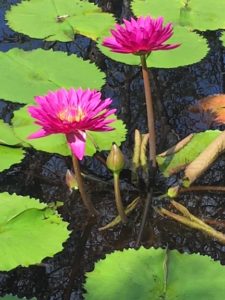
We were in Birmingham, Alabama for a family wedding this past weekend and had the opportunity to visit Birmingham Botanical Gardens (beautiful AND free!). At the entrance to the garden, a series of reflecting pools held both stunning reflections – and a collection of lovely water lilies.
I think water lilies are some of the most spectacularly beautiful plants in the world With roots in the mud and stems reaching toward heaven, water lilies and lotuses have always held particular symbolism and meaning for people of all cultures. But even without this, they are simply beautiful to look at.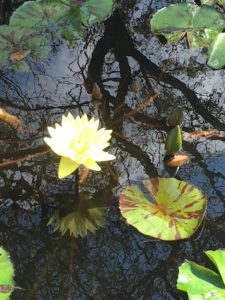
There are about 46 species of water lilies in the world, most of which are most at home in the warm and humid tropics but some of which are considered hardy and can withstand temperatures far below zero F.
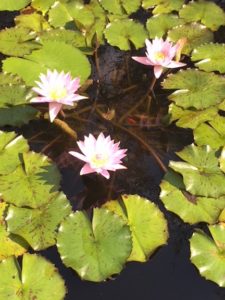 The most common waterlily in our part of the world is the North American white water lily, Nymphaea odorata. This is a hardy water lily and generally blooms from May through September. As cold weather approaches, it goes into a dormant state and sinks to the bottom of the pool or pond. If you use this in a water garden, be careful that you don’t plant it where the water spills into ponds, lakes, creeks or other natural water system as it can become invasive. When water lilies cover too much of a water system, they shade out the sun, creating water that is too cold for many native plants and fish.
The most common waterlily in our part of the world is the North American white water lily, Nymphaea odorata. This is a hardy water lily and generally blooms from May through September. As cold weather approaches, it goes into a dormant state and sinks to the bottom of the pool or pond. If you use this in a water garden, be careful that you don’t plant it where the water spills into ponds, lakes, creeks or other natural water system as it can become invasive. When water lilies cover too much of a water system, they shade out the sun, creating water that is too cold for many native plants and fish.
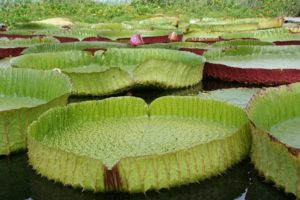 Probably the most interesting water lily is Victoria amazonia, named for Queen Victoria in 1837. Originally found growing in Bolivia in 1801, it is a remarkable plant. The leaves can grow up to 6 feet across and are composed of a series of ribs and air pockets, making each leaf surprisingly buoyant and strong. It is said that a leaf can support up to about 66 pounds.
Probably the most interesting water lily is Victoria amazonia, named for Queen Victoria in 1837. Originally found growing in Bolivia in 1801, it is a remarkable plant. The leaves can grow up to 6 feet across and are composed of a series of ribs and air pockets, making each leaf surprisingly buoyant and strong. It is said that a leaf can support up to about 66 pounds.
Water lilies are essential for those fortunate enough to have a water garden. Hybrids come in white, yellow, pink and blue. Some open in the morning and close in the evening, and others do just the opposite.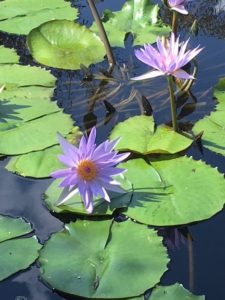
Many parts of the water lily are considered edible, including the young leaves and buds, seeds and tubers. Take care though, a Roman superstition suggested that boys who drank a tea made from the crushed leaves of the water lily would turn into eunuchs in 10 days. Consider yourselves warned…..

I’m sorry that I did not make it to the gardens with you.